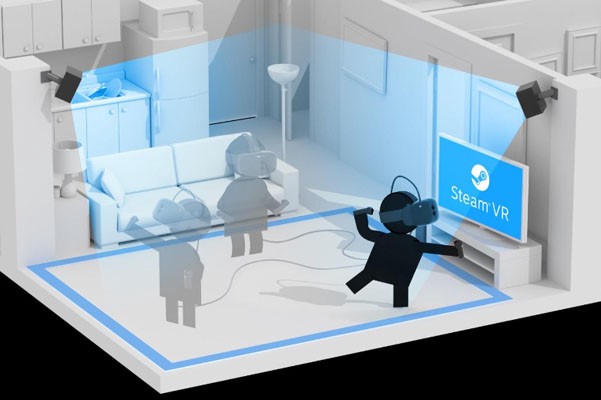The long-awaited delivery of HTC’s Vive virtual reality headsets to those who pre-ordered their units back in February is now well underway. While the arrival of the first (and currently only) commercially available hardware that delivers true VR presence at room-scale is great news, it is not without it’s practical challenges. The Vive’s preference for a 15’ x 15’ cleared space has surely initiated some tense conversations about the relative importance of dining rooms garages in the home, and conference rooms and lounges at the office. This has always been the contradiction of room-scale VR: It provides a powerful demonstration of the potential of VR, while just as capably demonstrating the serious practical challenges to widespread adoption.
So where in the marketplace does room-scale actually fit? An indication comes from the world of location-based VR, a form of mixed reality in which VR hardware is permanently installed at a location that has been specifically modified to provide the user with physical props that correspond to virtual ones (for example, a simple wooden chair bolted to the ground positioned exactly where a complex virtual throne exists in the virtual world, so that when the user sits, a plausible physical surface is there to meet them). Many of these location-based experiences can truly be considered warehouse-scale VR, often requiring custom tracking technology and back-mounted PC hardware to create a traversable volume that far exceeds the fifteen square feet that Vive hopefuls struggle to clear in their garage.
At least in the short-term, the Vive may have little choice but to establish itself in a market that slips in-between the comfy desk-scale VR of Oculus Rift and Playstation VR, and that of the sprawling mass-entertainment experiences of IMAX, and The VOID. Medium-scope experiences like those being developed for gyms, hospitals, retail sales, and other smaller-scale commercial environments might be worth considering for developers who are passionate about room-scale but loathe to depend on in-home adoption. These public-space applications of room-scale VR can also serve to seed the home market by allowing users to familiarize themselves with the tech, and potentially decide that it’s finally time to clear out their basement.
Matthew Hales is VP of Immersive Technology and a founding member of TurboSquid, and directs TurboSquid’s Virtual Reality Lab, focussing on VR, AR, photogrammetry and other immersive technologies. Read more of Matthew’s insights into virtual reality and 3D on Medium.

